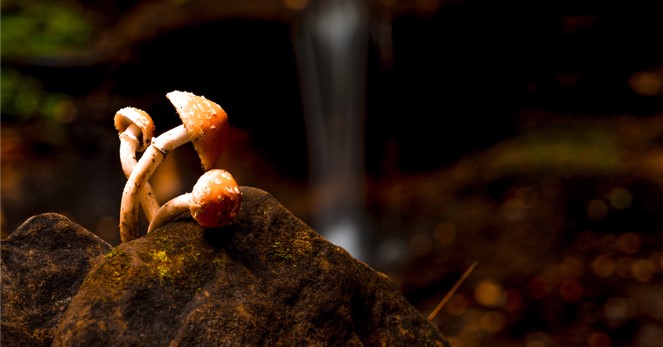
After 50 Years in the Dark, There May Be a Light at the End of the Tunnel for Psychedelics
Last week, voters in Colorado chose to decriminalize psychedelic use for residents over the age of 21, becoming the second state in the nation to move towards acceptance of this burgeoning therapeutic treatment. The ballot measure also set the stage for state-regulated “healing centers” where medical professionals can administer psychedelic treatment as part of a therapeutic regimen. Psychedelics remain a Schedule 1 drug on the Federal level, but the FDA has recently given them a “breakthrough therapy” designation. So, what is next for these so-called magic mushrooms?
What the Vote Means
Decriminalization. This portion of the bill allows residents aged 21 and over to grow, posses, and share psychedelic substances (magic mushrooms) without committing a crime. Sale of the substances is still not allowed.
Supervised Use. The bill also allows state-regulated centers to administer psilocybin and psilocin treatments. These active compounds in psychedelics are being studied as a potential mental health breakthrough, used in-tandem with mental health therapy sessions, capable of treating various conditions, including depression, PTDS, anxiety, eating disorders, and substance abuse disorders.
Where Psychedelics Stand
From ‘A Quick Look at 8 Small Caps in the Growing Psychedelics Space’ – Published to Channelchek last December:
“In recent years, the Food and Drug Administration (FDA) has granted psychedelic compounds Breakthrough Therapy status, which has opened the door to new research studies and the potential development of new medications. Recently, research and approval of new drugs has progressed past phase 2 trials for the use of psilocybin – the naturally occurring psychedelic prodrug compound produced by numerous fungi species – as treatment for depressive disorder. In another example, a drug proposed for the treatment of certain PTSD diagnoses is heading towards a second phase 3 trial, with full FDA approval possible as early as 2022.”
While full approval in 2022 didn’t happen, psychedelics continue to make headway in the FDA approval process. In July of this year, Filament Health (FLHLF) announced the beginning of dosing in the first FDA-approved clinical trial studying the effects of naturally derived psychedelic drug candidates. This study, designed to compare both the physiological and the psychological effects of psilocin, is expected to conclude towards the end of 2024.
While psychedelics and the FDA have a checkered past, the tide appears to be turning. A growing mental health crisis, along with years of research on the potential positive effects of psychedelic treatments, appear to be nudging the FDA closer to approval. Just last year, Johns Hopkins Medicine was awarded a National Institute of Health grant to stud psychedelic treatment for tobacco addiction. This federal research grant was the first of its kind approved in the past 50 years.
What’s Next
Schedule 1. Under the Controlled Substances Act, psychedelics remain in most restrictive Category 1, which creates numerous hurdles for approval as treatment. FDA approval would help. If current and future clinical trials lead the FDA to approve the drug for various treatments, the DEA would be prompted to reevaluate the drug’s schedule. Ballot initiatives like those in Oregon and Colorado also help on the local level.
Treatment. After more than 50 years, the study of psychedelics as part of a mental health treatment regimen is finally allowed. There’s a lot of lost time to make up for. Clinical trials will be needed for various conditions to determine appropriate dosing and combination therapies. Still deep in an opioid crisis, it’s fair to expect the FDA and DEA to proceed with caution, even with promising early results.
Parallels. While completely different, it’s easy to draw certain parallels with the medical and recreational legalization of marijuana in the US. Over two decades, we’ve seen various states vote to legalize medical-only use, with others voting in favor of complete decriminalization along with legal recreational use, while a few states remain steadfast in keeping it a crime. Will we see similar results with psychedelics? It’s possible that, with the growing number of nearly untreatable conditions that psychedelics could improve, we see widespread medical acceptance in the coming years. Recreational use will almost certainly take longer with the current Schedule 1 status.
Acceptance and Capital. Acceptance is half the battle. The other is capital. The companies involved in bringing psychedelics to market will need investors backing them to move forward. Between clinical trials, therapeutic training, production, and marketing, these companies will need a great deal of funding to make it to market. But the potential is clear. Efficacy in early studies far surpasses any currently available treatment method for various mental health conditions, creating a market expected to grow to a value of over $3 billion by 2026.
Chris Patches
Channelchek Contributor
Sources
https://www.nbcnews.com/data-graphics/magic-mushrooms-psilocybin-map-colorado-us-states-rcna55980
https://clinicaltrials.gov/ct2/show/NCT05317689
https://www.hopkinsmedicine.org/psychiatry/research/psychedelics-research.html
https://www.amjmed.com/article/S0002-9343(21)00521-0/fulltext